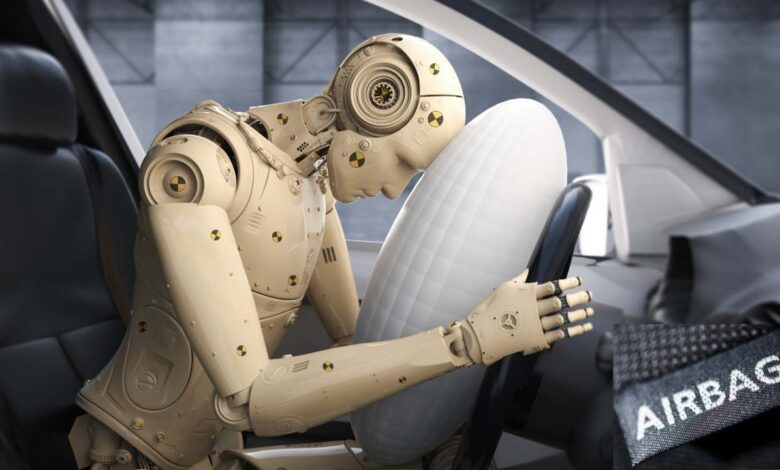Top 10 Vehicle Safety Features Every Driver Should Look For

In today’s fast-paced world, driving has become an essential part of our daily routine. Whether it’s commuting to work, running errands, or embarking on a road trip, the safety of the vehicle and its occupants should always be a priority. With advancements in technology, automakers have introduced a variety of safety features designed to protect drivers, passengers, and pedestrians alike. These features go beyond basic crash protection, helping to prevent accidents and minimize the severity of injuries.
However, with so many options available, it can be overwhelming to determine which vehicle safety features are truly essential for your protection. In this article, we’ll explore the top 10 vehicle safety features every driver should look for, breaking down how each one works and the impact it can have on your driving experience.
1. Anti-lock Braking System (ABS)
The Anti-lock Braking System (ABS) is a critical safety feature that helps maintain steering control during an emergency braking situation. ABS prevents the wheels from locking up when the brakes are applied forcefully, especially on wet or slippery surfaces. By allowing the driver to maintain control over the steering while braking, ABS reduces the chances of skidding and prevents loss of control in emergency situations.
Key Points:
- Prevents wheel lock-up during emergency braking.
- Helps maintain vehicle control on slippery roads.
- Reduces the risk of skidding and accidents, especially in adverse weather conditions.
Why You Should Care: ABS is now a standard feature in most modern vehicles, but it’s essential to ensure that your vehicle is equipped with it. The ability to steer while braking can be the difference between avoiding an accident and colliding with an obstacle.
2. Electronic Stability Control (ESC)
Electronic Stability Control (ESC) is designed to detect and reduce the loss of traction, such as during skidding or fishtailing. When the system detects that the car is losing stability, it automatically applies brakes to individual wheels to bring the vehicle back under control. ESC is particularly useful in preventing rollovers, which are one of the most dangerous types of accidents.
Key Points:
- Detects and reduces the loss of traction.
- Helps prevent rollovers and skidding accidents.
- Automatically applies brakes to individual wheels when necessary.
Why You Should Care: ESC is considered one of the most important safety features in modern vehicles. It significantly reduces the risk of serious accidents, especially in vehicles with a high center of gravity like SUVs. ESC is especially useful for novice drivers or in situations where the road conditions are not ideal.
3. Airbags (Front, Side, and Curtain)
Airbags are one of the most well-known safety features, providing crucial protection during a collision by inflating rapidly to cushion the driver and passengers. Front airbags protect the driver and front-seat passenger in a head-on collision, while side airbags protect the torso during side-impact crashes. Curtain airbags protect the head in the event of a side-impact collision or rollover.
Key Points:
- Front airbags protect the chest and head during a frontal collision.
- Side airbags reduce the risk of injury during a side-impact crash.
- Curtain airbags protect the head during side impacts or rollovers.
Why You Should Care: Airbags play a vital role in reducing injury severity during a crash. For maximum protection, ensure that your vehicle is equipped with front, side, and curtain airbags. Modern vehicles often include additional airbags, such as knee airbags, for even more comprehensive protection.
4. Adaptive Cruise Control (ACC)
Adaptive Cruise Control (ACC) is an advanced version of traditional cruise control. ACC automatically adjusts your vehicle’s speed to maintain a safe distance from the car ahead. If the system detects that you are getting too close to a slower vehicle, it will reduce your speed to maintain a safe following distance. In some cases, it can even bring the car to a complete stop if necessary.
Key Points:
- Maintains a safe distance from the vehicle ahead.
- Automatically adjusts speed based on traffic conditions.
- Can reduce driver fatigue, especially during long commutes.
Why You Should Care: ACC enhances driving comfort and safety by reducing the need for constant manual speed adjustments. It’s especially beneficial for highway driving, where vehicles tend to travel at high speeds for extended periods.
5. Lane Departure Warning (LDW) and Lane-Keeping Assist (LKA)
Lane Departure Warning (LDW) alerts the driver when the vehicle unintentionally drifts out of its lane without the use of turn signals. Lane-Keeping Assist (LKA) goes a step further by gently steering the vehicle back into its lane if the system detects lane drift. These features are particularly useful for preventing accidents caused by distractions or drowsy driving.
Key Points:
- LDW alerts the driver if the car drifts out of its lane.
- LKA gently steers the vehicle back into its lane if needed.
- Reduces accidents caused by distracted or tired driving.
Why You Should Care: Lane departure warning systems are a must-have feature, especially for long-distance drivers or those who tend to get distracted on the road. When paired with Lane-Keeping Assist, these systems can prevent dangerous collisions, particularly in situations involving drowsy or distracted driving.
6. Blind Spot Monitoring (BSM)
Blind Spot Monitoring (BSM) alerts the driver when another vehicle is in the blind spot, particularly when attempting to change lanes. This is important because the area beside your vehicle may not always be visible through your mirrors. BSM is often paired with rear cross-traffic alert to help with backing out of parking spaces.
Key Points:
- Alerts the driver of vehicles in the blind spot during lane changes.
- Helps avoid side-impact collisions.
- Can be paired with rear cross-traffic alerts for backing out of parking spaces.
Why You Should Care: Blind spot monitoring significantly reduces the risk of accidents that occur when changing lanes. This feature is particularly helpful in busy traffic or when driving on highways with fast-moving vehicles.
7. Rearview Camera and Parking Sensors
Rearview cameras provide a clear view of what’s behind the vehicle, making it easier to navigate tight parking spaces or reverse safely. Parking sensors complement this feature by alerting the driver to obstacles in close proximity to the vehicle, providing an extra layer of safety when parking.
Key Points:
- Rearview cameras provide visibility of obstacles behind the vehicle.
- Parking sensors alert the driver to nearby objects when reversing.
- Useful in tight parking spaces or when reversing in busy areas.
Why You Should Care: Rearview cameras and parking sensors are essential for preventing low-speed collisions, particularly when backing out of driveways or parking lots. These features are especially valuable in crowded areas or for drivers with limited rear visibility.
8. Automatic Emergency Braking (AEB)
Automatic Emergency Braking (AEB) is designed to prevent or mitigate a collision by automatically applying the brakes if it detects an imminent crash. AEB is particularly effective in rear-end collisions, where a driver might not react quickly enough to avoid an impact. This feature can be a lifesaver in traffic, helping to prevent accidents and reducing the severity of crashes.
Key Points:
- AEB detects an impending collision and applies the brakes.
- Helps prevent rear-end collisions and other crash types.
- Reduces the likelihood of serious accidents, especially in urban traffic.
Why You Should Care: AEB is a crucial feature that can prevent accidents or at least reduce their severity. It’s especially beneficial for city driving, where traffic congestion often leads to sudden stops and unpredictable movements.
9. Forward Collision Warning (FCW)
Forward Collision Warning (FCW) is a driver assistance system that detects the presence of vehicles or obstacles in front of the car and warns the driver if a collision is imminent. The system uses radar or cameras to monitor the road ahead and alert the driver with audible or visual warnings if they’re approaching a vehicle too quickly.
Key Points:
- FCW warns the driver of potential frontal collisions.
- Uses radar or cameras to detect vehicles ahead.
- Provides timely alerts to avoid accidents.
Why You Should Care: Forward Collision Warning is an excellent first line of defense against potential accidents. It helps drivers stay alert and avoid rear-end collisions by giving them the time they need to react.
10. Traction Control System (TCS)
The Traction Control System (TCS) prevents wheel spin during acceleration, especially on slippery or wet surfaces. This system is particularly helpful when driving in snow, rain, or ice, as it ensures that the vehicle’s wheels maintain grip with the road. TCS works in conjunction with the ABS and ESC to provide enhanced stability in challenging driving conditions.
Key Points:
- Prevents wheel spin during acceleration on slippery surfaces.
- Works in conjunction with ABS and ESC for enhanced vehicle stability.
- Improves handling on wet, icy, or snowy roads.
Why You Should Care: Traction Control is especially beneficial for drivers who live in areas with frequent rain or snow. It helps ensure that your vehicle stays under control even in adverse weather, improving both safety and drivability.
Conclusion
Vehicle safety features have evolved tremendously over the years, offering a wide range of technologies designed to protect drivers, passengers, and pedestrians. While some features are now standard, others can significantly reduce the risk of accidents and save lives. From the basics like airbags and ABS to advanced systems like lane-keeping assist and automatic emergency braking, these technologies have made driving safer than ever before.
As you consider your next vehicle purchase, make sure to prioritize safety features that offer the greatest protection and peace of mind. Keep in mind that many of these features can lower your car insurance premiums, offering even more financial benefits in the long run. By investing in a vehicle equipped with these essential safety technologies.



